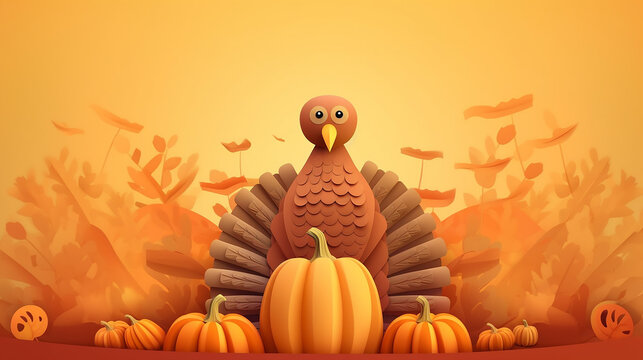Drawing is a fundamental form of artistic expression that has captivated creators and viewers for centuries. From simple sketches to intricate illustrations, drawing allows artists to convey ideas, emotions, and stories in a visually compelling way. In this comprehensive guide, we delve into the art of drawing, exploring various techniques, styles, and sources of inspiration that can elevate your skills and creativity. Drawing:v04hso9zvvq= art
Understanding the Basics of Drawing
What Is Drawing?
Drawing:v04hso9zvvq= art Drawing is the process of creating images on a surface using tools like pencils, pens, charcoal, or digital mediums. It involves various techniques to represent shapes, lines, textures, and shading. As one of the most accessible forms of art, drawing serves as both a standalone art form and a foundational skill for other artistic disciplines. Drawing:v04hso9zvvq= art
Essential Drawing Tools and Materials
Before diving into techniques and styles, it’s crucial to understand the basic tools and materials used in drawing. Traditional drawing tools include graphite pencils, charcoal, ink pens, and various types of paper. For digital drawing, tablets and software such as Adobe Photoshop or Procreate offer a wide range of possibilities. Familiarity with these tools helps artists choose the right medium for their creative vision. Drawing:v04hso9zvvq= art
Techniques for Mastering Drawing
Basic Drawing Techniques
Drawing:v04hso9zvvq= art Mastering basic drawing techniques is essential for any artist. Start with fundamental exercises like line drawing, shading, and perspective. Line drawing focuses on creating shapes and contours, while shading techniques, such as hatching and blending, add depth and dimension. Understanding perspective, including one-point and two-point perspectives, helps create a sense of space and realism in drawings.
Advanced Drawing Techniques
Once you’ve mastered the basics, explore advanced techniques to enhance your drawing skills. Techniques like cross-hatching, stippling, and chiaroscuro can add complexity and sophistication to your work. Experimenting with different textures and surfaces, such as using different types of paper or incorporating mixed media, can further expand your creative possibilities. Drawing:v04hso9zvvq= art
Exploring Different Drawing Styles
Realistic Drawing
Realistic drawing aims to represent subjects as accurately as possible, capturing details and nuances to create lifelike images. This style requires a keen eye for observation and precise techniques to replicate textures, lighting, and proportions. Artists often use realistic drawing to create portraits, still lifes, and natural scenes. Drawing:v04hso9zvvq= art
Abstract Drawing
Abstract drawing focuses on expressing emotions and ideas through non-representational forms. Instead of depicting recognizable objects, abstract drawings use shapes, lines, and colors to convey feelings or concepts. This style allows for greater freedom and experimentation, encouraging artists to explore new ways of visual expression. Drawing:v04hso9zvvq= art
Finding Inspiration for Your Drawings
Drawing from Life
Drawing from life is an invaluable practice for improving observational skills and accuracy. Observing and sketching real-life subjects, such as people, animals, or landscapes, helps artists develop a deeper understanding of proportions, anatomy, and perspective. Life drawing sessions and plein air drawing are excellent ways to practice and refine these skills.
Exploring Art History and Contemporary Art
Drawing:v04hso9zvvq= art Drawing inspiration from art history and contemporary art can provide new perspectives and techniques. Studying the work of renowned artists, such as Leonardo da Vinci or Frida Kahlo, can offer insights into different styles and approaches. Additionally, exploring current art trends and exhibitions can inspire fresh ideas and keep your work relevant. Drawing:v04hso9zvvq= art
The Role of Drawing in Artistic Development
Building a Strong Artistic Foundation
Drawing:v04hso9zvvq= art Drawing serves as the foundation for many other artistic disciplines, including painting, sculpture, and digital art. Developing strong drawing skills enhances overall artistic abilities and provides a solid base for exploring other mediums. For artists pursuing diverse practices, mastering drawing techniques is essential for creating coherent and impactful work. Drawing:v04hso9zvvq= art
Enhancing Creativity and Problem-Solving
Engaging in regular drawing practice can boost creativity and problem-solving skills. The process of translating ideas into visual form encourages critical thinking and experimentation. By tackling various drawing challenges and exploring different styles, artists can develop unique solutions and approaches to their creative projects.
FAQs About Drawing
What Are the Best Tools for Beginners?
For beginners, essential drawing tools include graphite pencils (ranging from hard to soft), erasers, and sketchbooks. A set of basic pencils, such as 2H, HB, and 2B, allows for a range of line qualities and shading effects. As you progress, you may explore additional tools like charcoal, colored pencils, or digital tablets based on your interests and goals.
How Can I Improve My Drawing Skills?
Improving drawing skills requires regular practice and exploration. Start with basic exercises and gradually challenge yourself with more complex subjects. Seek feedback from peers or mentors, and study the work of other artists to gain new insights. Online tutorials, art classes, and drawing workshops can also provide valuable guidance and techniques.
What Is the Difference Between Traditional and Digital Drawing?
Traditional drawing involves using physical materials, such as pencils, pens, and paper, while digital drawing uses electronic devices and software. Traditional drawing offers a tactile experience and allows for direct manipulation of materials, while digital drawing provides flexibility with tools and editing capabilities. Both methods have their own advantages and can be used based on personal preference and project requirements.
How Can I Find Inspiration for My Drawings?
Inspiration can be found in various sources, including nature, everyday life, and art history. Observing your surroundings, visiting art galleries, or exploring different cultures can spark new ideas. Additionally, keeping a sketchbook and regularly drawing from life or imagination can help cultivate creativity and generate fresh concepts.
Are There Any Specific Techniques for Drawing Portraits?
Drawing portraits requires a focus on capturing likeness and facial features. Techniques such as proportion mapping, value shading, and understanding anatomy are essential for realistic portrait drawing. Practice with different reference images and study the structure of the human face to improve accuracy and detail in your portraits.
Can Drawing Help with Stress Relief?
Yes, drawing can be a therapeutic activity that helps with stress relief. Engaging in drawing allows for mindfulness and creative expression, providing a calming effect. Many people find that the act of drawing helps them relax and focus, reducing stress and promoting mental well-being.
How Do I Develop My Own Drawing Style?
Developing a personal drawing style involves experimenting with different techniques, subjects, and mediums. Allow yourself to explore various approaches and incorporate elements that resonate with you. Over time, your unique style will emerge as you refine your skills and express your individual artistic vision.
In conclusion, drawing is a powerful and versatile art form that offers endless opportunities for creativity and self-expression. By mastering basic and advanced techniques, exploring different styles, and finding inspiration, artists can enhance their skills and create impactful work. Whether you are a beginner or an experienced artist, embracing the art of drawing can lead to personal growth and artistic fulfillment.






